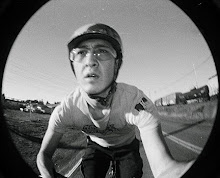An unusually early, heavy snow hit Eugene last night.
 Unlike so many happy schoolchildren, I didn't get the day off. Here's the Schwinn Snow Machine — simply my polo bike with cyclocross tires.
Unlike so many happy schoolchildren, I didn't get the day off. Here's the Schwinn Snow Machine — simply my polo bike with cyclocross tires.It worked pretty well, but didn't have the cargo space I needed for the trip to LovEmbroidery today.
 Black Beauty held up well enough. I've biked in the snow once before, as a sort of novelty, on my 27" road bike. Never have I ridden delivery in conditions like today's. It was humbling, like my first day all over again, only there was nobody to guide me, which compels me to guide you.
Black Beauty held up well enough. I've biked in the snow once before, as a sort of novelty, on my 27" road bike. Never have I ridden delivery in conditions like today's. It was humbling, like my first day all over again, only there was nobody to guide me, which compels me to guide you.There's a trick to riding on snow or ice: don't.
In Eugene, the bike paths get plowed, so that's a good option. Unfortunately, the bike paths don't cover every route, and bikers generally have four alternatives:
- Sidewalk. This doesn't work. Pedestrian traffic leaves uneven patches of tractable concrete, lumpy powder, and deadly ice. Also, it's wrong; the sidewalk is for unwheeled transport. Keep pedestrians safe and stay off.
- Grass. Usually layered with an even coat of powder, it's tempting to plow through the soft stuff. But this doesn't work either. The powder hides things like roots and other edges that can make you take a spill. Also, the powder builds up in the wheel wells and on the brakes, slowing you down and diminishing your stopping ability.
- Bike lane. Like the sidewalk but worse. Other bikes leave wavy grooves of ice that wind through the powder, making it impossible to maintain course or pace.
- Car lane. If you need to ride on the road, basically, the only thing one can do is look for patches of slush created by car traffic.
 Right here I almost dumped it. The wall and trees to the right shaded the roadside all day, preventing any melting, even in the car lane. I dragged the bike onto the sidewalk and hoofed it for a couple blocks.
Right here I almost dumped it. The wall and trees to the right shaded the roadside all day, preventing any melting, even in the car lane. I dragged the bike onto the sidewalk and hoofed it for a couple blocks. This is where I got back on the road. See that nice, frictioney slurry on the left? That's what you ride on. As you can see, the area that would be the bike lane is a death trap, the curbside is covered in powder, and the sidewalk is also a mess.
This is where I got back on the road. See that nice, frictioney slurry on the left? That's what you ride on. As you can see, the area that would be the bike lane is a death trap, the curbside is covered in powder, and the sidewalk is also a mess.As I plugged along in the slush-groove left by the right-side-tires of so many sedans and SUVs, traffic calmly and quietly slotted over into the turn lane to pass me without ado. No honks, no swerving, nothing. Perhaps it was because the little colored lines on the road were mostly covered — nobody was afraid to get caught "stepping out." That, and most people had already resigned to moving at a slower pace.
I'd also like to think the snow makes folks who rarely see it look at everything with new eyes — not just the roof and the lawn and the driveway, but everything. It's a jolt — you step outside and suddenly, the world is too bright; you're squinting, and as your eyes dart about, nothing is familiar. With the familiar removed, you suddenly have to think actively, evaluate, make decisions for yourselves.
I'd wish it would snow more often, but then it would lose that jolting property.
Finally, I have to point out that, in the case of snow, bikes are not necessarily the most appropriate transport. Here's a different form of transport that works for passengers, cargo, and fun in the snow, as demonstrated by friends Bryan and Michelle:








I used the red sled yesterday to go to the grocery store. Parked it out on the bike rack like it was my trusty stead. Sadly, the past 3 days, it has been. Only a little bit of snow-biking on the IRO before I couldn't go anywhere. Sigh.
ReplyDelete